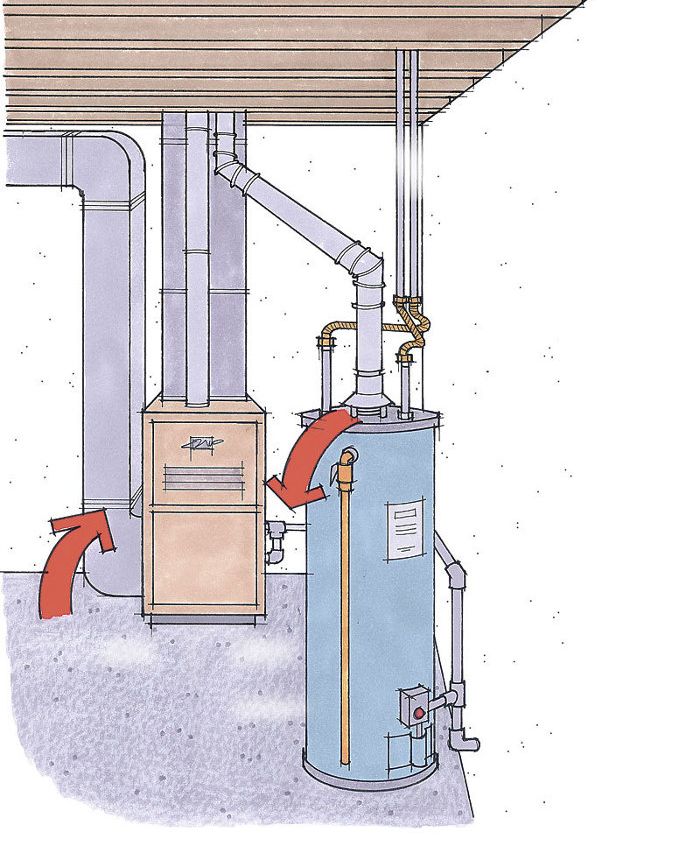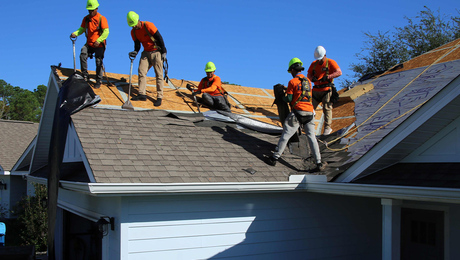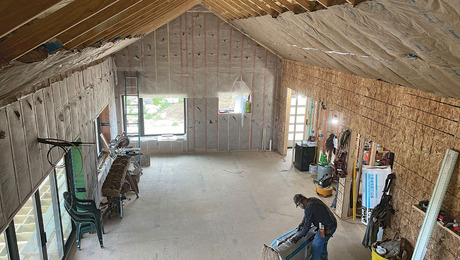Bad Ducts = Bad Air
Higher energy bills and lower comfort levels aren’t the worst effects of faulty ducts.

Synopsis: In this article, energy consultant Allison A. Bailes III details ways in which poorly designed or installed ducts affect indoor-air quality. Leaky return ducts can cause fireplaces and water heaters to backdraft, and they can suck contaminants from attic or foundations spaces. Leaky supply ducts can create pressure differentials that suck polluted air from garages, attics, or foundations. A sidebar discusses the importance of commissioning a new HVAC system, which involves testing the system, correcting problems, and retesting.
Drawing: Martha Garstang Hill
It’s well known that leaky, poorly designed duct systems cost their owners money and comfort in multiple ways. However, such systems can also make the air inside the houses unsafe to breathe. Indoor air quality (IAQ) doesn’t get nearly as much attention as other green-building concerns such as energy efficiency, but it should be one of the highest priorities for anyone who breathes air and spends time indoors. I grew up with really bad asthma, which was often triggered by indoor pollutants. I know the importance of good IAQ. I’ve also learned a good bit of building science and know that these issues are interconnected.
Ducts in forced-air heating-and-cooling systems do one of two things: They either supply conditioned (heated or cooled) air to the house, or they return house air to be conditioned. Both supply and return ducts connect to the air handler, which is essentially a big fan. Supply ducts connect to the side of the air handler that blows air, so they’re under positive pressure. Between the air handler and the supply ducts is the furnace heat exchanger and/or the air conditioner’s or heat pump’s coils. Return ducts attach to the intake side of the air handler and run under negative pressure. Ideally, ducts should not leak. You also want them sized properly and installed well so that air moves through them efficiently. They should also be commissioned—that is, checked and adjusted at initial startup—by an expert to ensure that the system is balanced. In a balanced system, the same amount of air flows through the supply ducts as goes back through the return ducts.
If your duct system is leaky or unbalanced, air from spaces such as the attic, crawlspace, or garage is likely to find its way to your living areas. Think about what’s found in those places: insulation fibers, rodent and insect feces (cockroach feces are a major asthma trigger), mold, pesticides, radon, and fuel vapors. In one case, a HERS (home-energy rating system) company I work with, E3 Innovate in Nashville, Tenn., found a disconnected return duct sucking up air in a nasty, vented crawlspace. That’s bad enough by itself, but this particular crawlspace also had a dead possum lying close to that open return duct. Even the best filtration system would be hard pressed to remove that putrefaction from the air.
Ducts are a critical component in maintaining IAQ. When installing an HVAC system, you’d be much better off getting less-expensive, less-efficient equipment and spending extra to get the tightest, most balanced duct system you can. Your lungs and your overall health will benefit, and you’ll still probably win when it comes to saving energy and being more comfortable because your home won’t be sucking in cold winter air or blowing out conditioned air.
For more photos and details, click the View PDF button below:























View Comments
Thank you for this! At the top of my cold air return at the furnace is a vent that can be opened or closed. It’s been open for years to let more basement air return to the system. What I never considered was what you pictured: my hot water heater flue is just 24 inches away. In extremely cold weather I could feel cold air coming into the basement from the flue when the hot water tank was idle, but thought that was just a natural effect from heavy, cold air coming down. Not once has my HVAC company said anything about this danger. In fact, once when I asked if it should be open or closed, the guy said it didn’t matter, but with it open the furnace would get more air. I just went down and covered the vent and sealed it with foil tape and some leftover Refectix. The other basement cold air return is about 20 feet away.